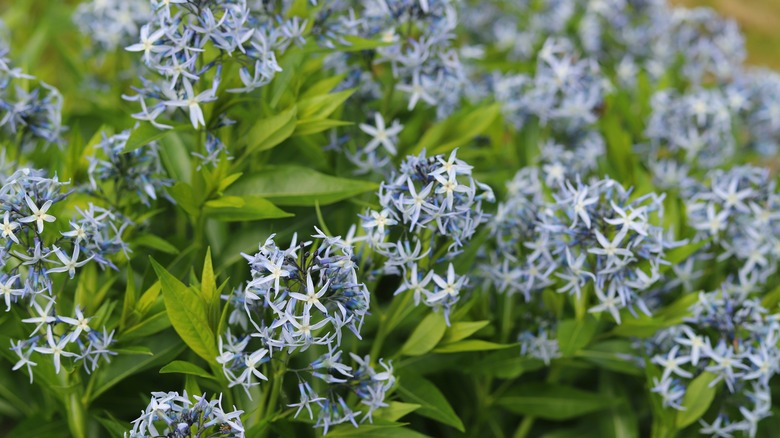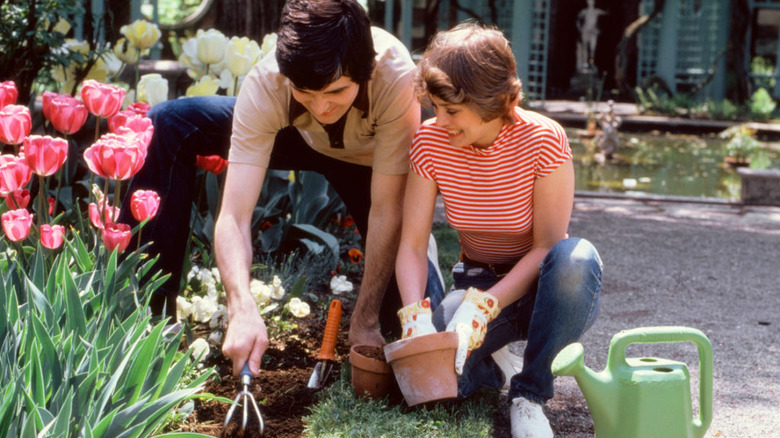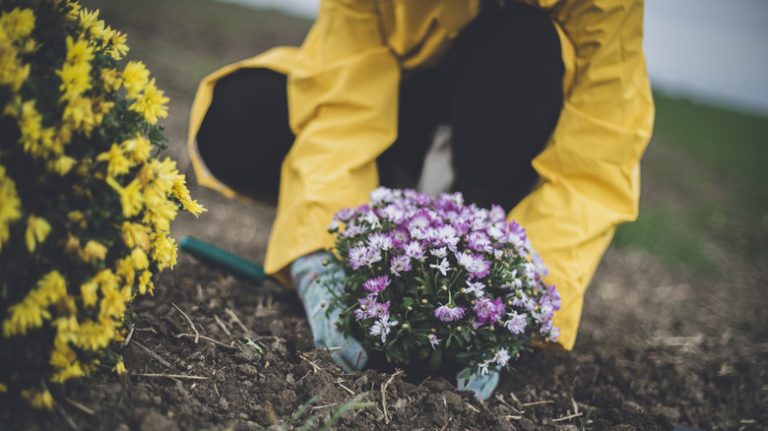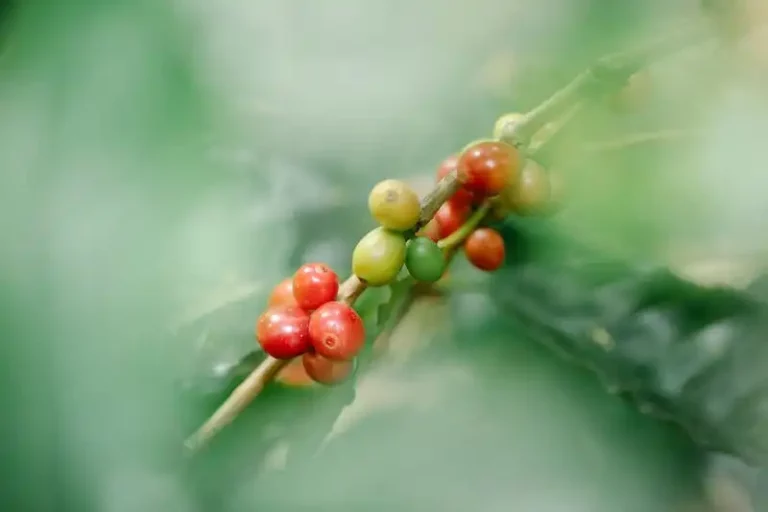Companion planting is the key to designing a balanced garden or flower bed. The method consists of choosing which flowers to place near one another based on the potential benefits of the pairing. For instance, certain plants known for deterring pests are beneficial to place near plants that are particularly susceptible to them. Other specific plants can also aid in the prevention of weeds, help with pollination, and even improve the health of the soil for their neighboring flowers.
In some cases, companion planting is as simple as pairing two plants together because of the visual impact they make together or the fact that they grow in the same garden conditions. This is the case when it comes to Amsonia and spring bulbs. While many spring bulbs produce shorter, more concentrated bursts of boldly colored flowers, Amsonia is a spring-blooming perennial that stands taller and produces a plethora of delicate star-shaped flowers and soft needle-like leaves. It comes in a handful of varieties, including blue ice and thread-leaf. Together, they create the perfect spring flowerbed show.
How to plant Amsonia and spring bulbs together

The varieties of Amnosia and spring bulbs you plant will depend on which USDA hardiness zone you live in. Both Amsonia and many popular spring bulb flowers — like tulips — prefer full sun. Select an area for your garden or bed that receives at least 6 hours of direct sunlight per day. Where these plants differ is in their soil moisture requirements. Amsonia prefers moist soil, while most spring bulbs require well-draining soil that doesn’t retain too much moisture. These differences can be overcome by choosing an area with well-draining soil and then taking a few simple precautions when planting your Amsonia.
When planting Amsonia, add organic matter to the soil at its base. This may include worm castings, manure, or decomposing leaves. Once you’ve finished planting, cover the base of the Amsonia with several inches of organic mulch. These steps are not necessary for your spring-blooming bulbs, which tend to prefer less heat and moisture retention. Both your bulbs and Amsonia can be planted in the fall and will emerge the following spring.
How to care for Amsonia and spring bulbs together

Since Amsonia best serves spring bulbs as a backdrop, it isn’t difficult to satisfy its thirstier nature without overwatering your bulb flowers. In addition to helping your Amsonia retain more water at the base by incorporating organic matter and a mulch covering, you can use drip irrigation to deliver constant moisture to the plant’s roots. Since most spring bulb flowers prefer soil that dries out between weekly waterings, this allows both plants to thrive while still serving as a perfectly paired spring forefront and backdrop.
Incorporating drip irrigation to supply constant moisture to your Amsonia can be as simple as placing a watering globe at the base of each plant. These inexpensive and often decorative glass globes can be filled with water and inserted by the spiked neck into the soil near a plant’s roots, providing a constant water source that is absorbed slowly between waterings. You can purchase a two-pack of Tomorotec globes on Amazon for $13.99.



